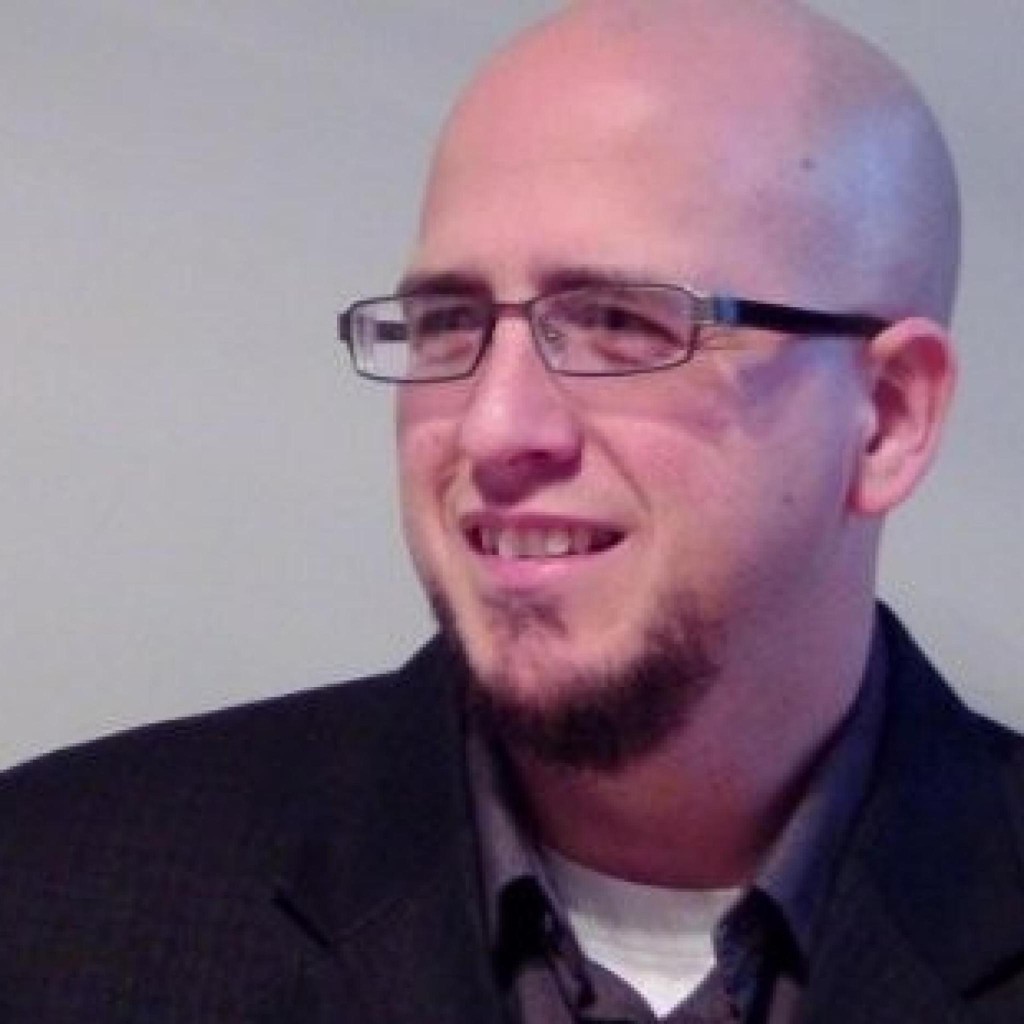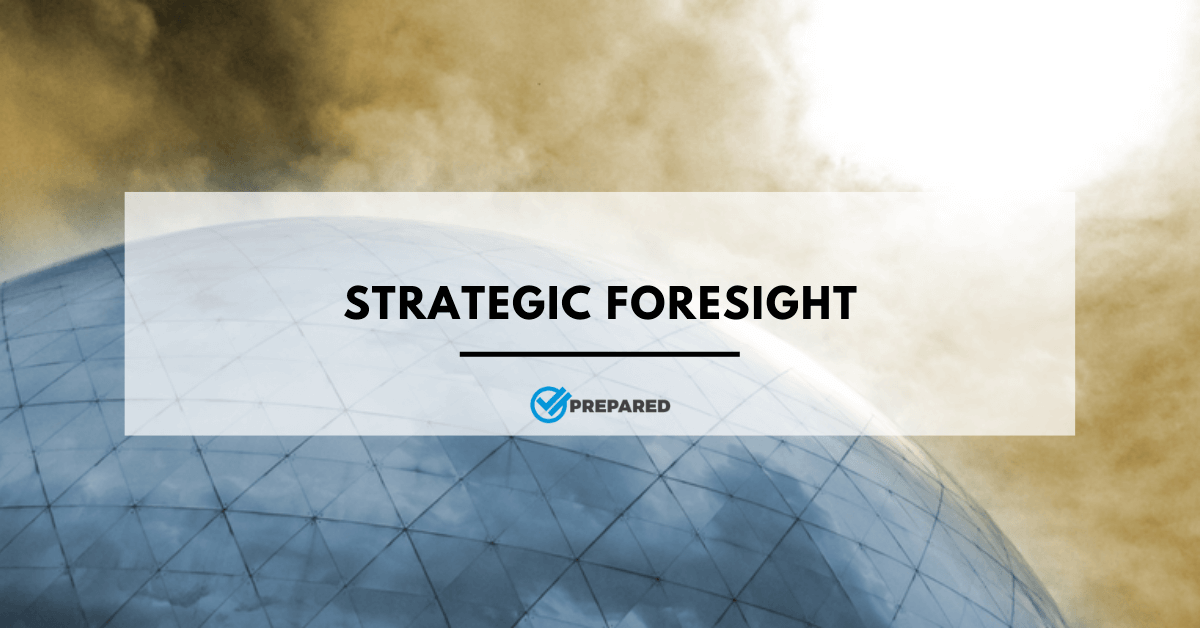What is the most important tool in your survival kit? Is it a bucket of freeze-dried food, a gun, bullets, or a gas lamp? Your most important tool for surviving a disaster is the same as for thriving in a safe, modern world: your brain. However, that tool is only as useful as the whetstone with which you sharpen it. The full name of this website is ‘Prepared with Foresight’, but to date, most of the posts have been about preparation and less about foresight. So, let me introduce you to the most important tool in my own mental toolbox, strategic foresight.
How to use Strategic Foresight in Disaster Preparedness
Strategic foresight is a set of tools and methods that are often used by organizations (both public and private) for envisioning the future to identify potential risks and opportunities, and developing strategies to optimize their organizational response. Strategic foresight is the practical application of futures studies which evolved over the Twentieth Century. It is an academic study of how to anticipate the future.
At first, many scholars wanted and even expected to predict a single future. As their attempts failed, it became evident that a more effective method was forecasting multiple futures, or scenarios of the future. They then use these varied futures to build strategies to achieve a preferred future.
Scenarios of Uncertain Futures
The above is a pretty stuffy definition, and my academic colleagues will quibble over it and send hate mail to me. So let me simplify it even more. The basic point of strategic foresight is that the future is unpredictable. However, we can better prepare for the eventual future by developing strategies based on scenarios of multiple futures.
These scenarios can be used as much to sharpen your strategic skills as maintaining your awareness of change. So, the benefits for business planning, and strategic planning in general, are pretty obvious. For disaster preparedness, the benefits of foresight should still be obvious.
- If a scenario that you have previously planned out actually occurs, you will already have a strategy for survival. It will be easier to adjust an existing strategy than to build a new one on the fly.
- If a scenario that you did not plan for occurs, you will still be better prepared if you have properly followed the strategic foresight process. As I said, your most important tool is your mind, and strategic foresight will help sharpen your strategic skills. In emergency situations, the more alert you are to everything, the greater your chances are of survival.
- Foresight can help you identify which disaster scenarios are the most likely and/or will have the largest impact. Then you can rate them on a scale that affects how much effort you put into preparing for each scenario. You cannot prepare for every contingency, but strategic foresight can help you organize and plan for the unexpected at peak efficiency.
- You can more effectively follow changes in the world around you that may lead to a contingency. Just preparing for scenarios is not enough if you are not following the actual future’s development in the real world.
- You can more readily spot risks and opportunities both locally and on a global scale. Used correctly, strategic foresight could help you build a strategy to turn a risk into an opportunity. In that way, you can do more than survive. You can thrive through disaster.
Strategic Foresight Methods
Strategic foresight methods are actually quite easy to use. They may sound complicated at first, but it is the sort of thing that will soon be taught at a primary school level. So how do you use strategic foresight? It will take me a few more posts to properly explain, but the basic process is:
1) Follow daily news to spot events that could significantly affect the future; this is called horizon scanning.
2) Connect these events to search for trends that might be affecting or driving changes in social behavior, tech development, economic security, political directions, and the environment.
3) Imagine plausible but unexpected changes that could happen. Futurists often call these wild cards and sometimes black swans.
4) Combine all this research into different scenarios. Without prior research, we cannot build plausible scenarios. Instead, we will be stuck planning for an alien invasion that may never come or a zombie apocalypse which has a lower probability than just your average magnitude 8 earthquake. That is not to belittle the severity or likelihood of either alien invasion or zombies. Both should be considered but with a clear understanding of their relation to other, more plausible scenarios such as an earthquake or severe market crash.
5) Build your own preferred future (stages 4 and 5 can be switched depending on your purpose). You need to be very specific here. Where do you see yourself in 5, 10, or 25 years assuming no disaster occurs? Be realistic with yourself about what you want to achieve and how likely you are to achieve it considering your daily needs. Then you will be able to better consider how you can achieve your goals even during a disaster.
6) War game the scenarios to build strategies for achieving your preferred future regardless of any contingencies. This is the ultimate step. What is the point of surviving a disaster if you allow it to change you into something close to a non-human? Don’t just plan your own survival. Plan the survival of your way of life, your culture.
Strategic Foresight and Culture
Adopting strategic foresight for risk management and contingency planning is not so much about sharpening your mind as much as sharpening your culture. Have you ever heard the phrase, “Culture eats strategy for breakfast”? This applies to businesses trying to survive their competition, and it applies doubly to personal disaster planning.
You can have every insurance policy, a can opener for every tin, and more guns than Schwarzenegger. However, if you are not culturally ready with the right training, the right resources, and the right way of thinking; you will not survive. It is easy to measure training and resources. The right thinking is much more challenging.
Looking to the Future
This post is the first in a series about strategic foresight and its practical application for risk management and disaster planning. My next few posts will get more specific about the tools and methods used in strategic foresight. This will be followed by shorter articles that highlight new developments, trends, and scenarios to consider in your contingency planning. The most important thing to me is that you learn how to turn any contingency into an opportunity that can help you achieve your key goals.

Dennis Draeger is the research director for Shaping Tomorrow, https://shapingtomorrow.com/. He has over 15 years’ experience in business start-up, management and consulting. He has helped clients around the world think more effectively about the future. To see some of his other work, visit Aiglatson Foresight Research, https://aiglatsonforesight.com/.

